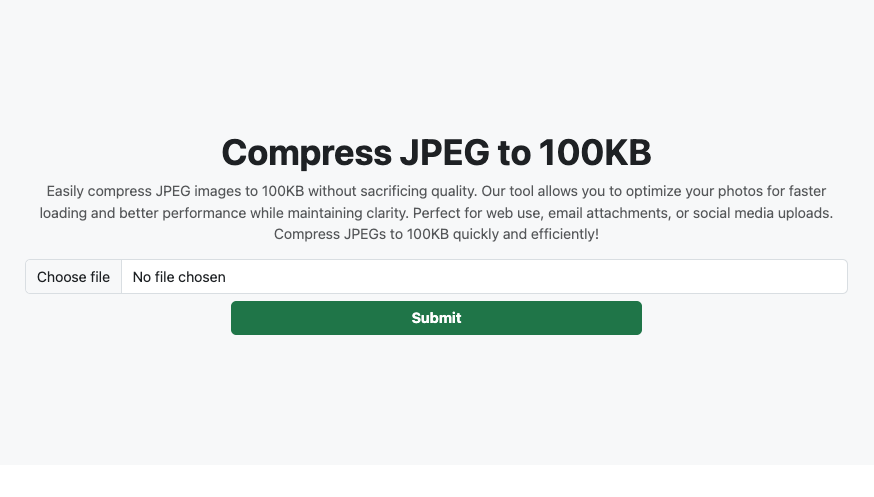Optimizing images is crucial for maintaining a fast-loading website. One of the most effective ways to achieve this is by compressing your images to a manageable size, like 100KB. This guide will walk you through the process of using an image compressor to reduce your images to 100KB without losing quality, and answer some frequently asked questions.
Why Compress Images to 100KB?
Compressing images to 100KB can significantly enhance your website’s performance. Here are some key reasons why you should do it:
- Faster Loading Times: Smaller images load quicker, which improves user experience.
- Better SEO: Search engines favor websites that load fast, so compressed images can improve your search rankings.
- Reduced Bandwidth Usage: Smaller image sizes mean less data consumption, which is particularly beneficial for mobile users.
How to Use an Image Compressor to Reduce Images to 100KB
Follow these simple steps to compress your images using Image-Compress.com:
Step 1: Visit Image-Compress.com
Go to Image-Compress.com, a user-friendly and efficient tool for image compression.
Step 2: Upload Your Image
Click on the “Upload” button and select the image you wish to compress. You can upload several images at once if necessary.
Step 3: Adjust Compression Settings
After your image is uploaded, adjust the compression settings. Aim to reduce the file size to 100KB while maintaining acceptable quality.
Step 4: Compress the Image
Click the “Compress” button. The tool will process your image, reducing its size.
Step 5: Download Your Compressed Image
Download the compressed image. Ensure it is under 100KB and still maintains good quality.
Tips for Effective Image Compression
- Choose the Right Format: JPEG is typically best for photographs, while PNG is ideal for images with fewer colors or transparency.
- Resize Images: If your image is very large, resize it to the desired dimensions before compressing.
- Preview Before Downloading: Always check the compressed image to make sure the quality is acceptable.
